One of my favorite photo subjects is ruins and old run-down industrial buildings. Great subjects for fine art images. Seeing history with my own eyes is just too cool. To that end, I plan to spend several posts covering the sugar, rum and railroad history of PR. This is the first installment in that effort.
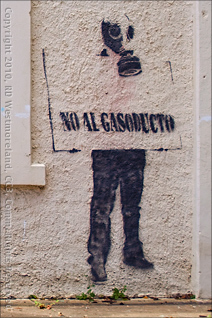 I’ve spent a lot of time researching sugar production and the rum (ron/Spanish) distilleries of Puerto Rico.
I’ve spent a lot of time researching sugar production and the rum (ron/Spanish) distilleries of Puerto Rico.
Coffee, tobacco and sugar cane were the primary income crops from the time the island was ‘settled’ until well into the 20th century.  Slavery, followed by cheap, unorganized labor was the driving force behind all production. As labor costs increased, the Spanish and then American interests proceeded to mechanize where they could. Some plantations were still using ox drawn carts to transport the cane from the fields, up through the late 1940’s.
Slavery, followed by cheap, unorganized labor was the driving force behind all production. As labor costs increased, the Spanish and then American interests proceeded to mechanize where they could. Some plantations were still using ox drawn carts to transport the cane from the fields, up through the late 1940’s.
Prior to the interstate highways, there was a rail service that circled almost the entire island. What’s more, lots of plantations (haciendas) would have their own narrow gauge trains working the fields and local sugar mills. There were many of these small sugar mills spread out all over PR.
 As of today, you can still see their red brick, square chimneys dotting the landscape.
As of today, you can still see their red brick, square chimneys dotting the landscape.
You can’t miss ’em since they stand 40 to 50 feet tall. Most are in some state of decay. A few have been turned into historical monuments to a bygone era like the one at the Botanical Gardens in Caguas.
The island wide public train service came to a halt in 1951. Local narrow gauge sugar cane trains ended in 1958. Arroyo ran a small train for tourists from 1984 to 2005. 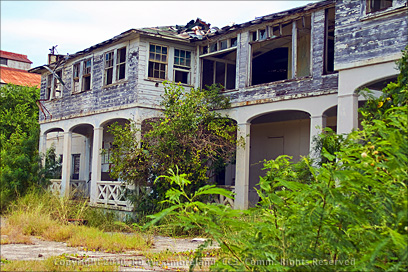 It was a guided 50 minute run around the last surviving sugar hacienda. It closed for restoration and never reopened, but supposedly, the Department of the Interior has picked up the project. I’ll be looking into that more in the near future.
It was a guided 50 minute run around the last surviving sugar hacienda. It closed for restoration and never reopened, but supposedly, the Department of the Interior has picked up the project. I’ll be looking into that more in the near future.
In all fairness, there is a pair of diesel locomotives doing service at the Port of Ponce. They are used strictly for moving tank cars in support of the pharmaceutical biz. Otherwise, there is no working train service left. Too bad too! Tren Urbano in San Juan don’t count.
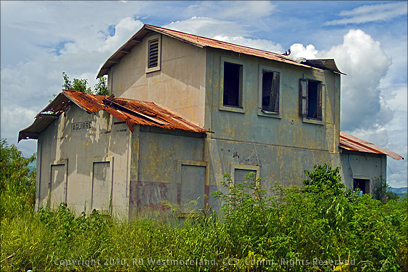 RUM.. ARRGGG!!!
RUM.. ARRGGG!!!
Early Rum distillation in PR can be tracked back to the 16th century. It started out as a domestic product not suitable for western palates, but it did not take long before they were exporting a refined, filtered product like we enjoy today.
Believe it or not, ExPats from Ireland were instrumental in expanding the sugar and rum industries and initiating the cultivation of tobacco. Between trying to avoid service in the “Queen’s Navy” circa 1585 (and forward) and the Potato Famine of the 1840’s, many Irishmen have settled here. 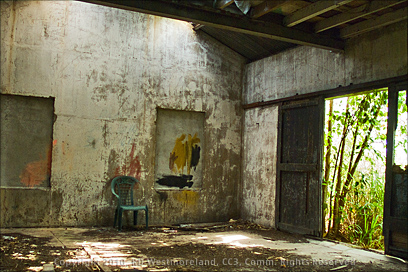 In 1823, 2 Irish brothers brought the first steam driven sugar mill to Puerto Rico and set up shop near Ponce on their own plantation. Bayamon, outside of San Juan has a community (urbanization) called Irlanda Heights ( Ireland Heights). Yes, St. Patrick’s Day is celebrated in many places. Luquillo hosts a St. Patty’s Day parade as well. Who knew?
In 1823, 2 Irish brothers brought the first steam driven sugar mill to Puerto Rico and set up shop near Ponce on their own plantation. Bayamon, outside of San Juan has a community (urbanization) called Irlanda Heights ( Ireland Heights). Yes, St. Patrick’s Day is celebrated in many places. Luquillo hosts a St. Patty’s Day parade as well. Who knew?
I’ll be elaborating on sugar, rum and the RR’s in future posts.
Aguirre, a place lost to a Bygone Era
Because the area around Aguirre was the last area to suspend sugar production (1993), I started my field work there. It’s off Hwy 3, east of Salinas and west of Guayama. It’s technically a barrio of Salinas so no plaza or mayor’s office.
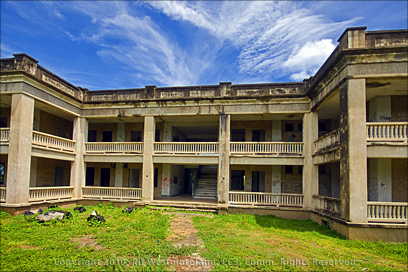 Around Aguirre, banana and papaya groves stand where sugarcane once grew.
Around Aguirre, banana and papaya groves stand where sugarcane once grew.
Not quite a ghost town, but close. Its a small community of only a couple hundred folks. The Post Office stands next door to the defunct mill. A sign warning about Asbestos exposure was posted in the parking lot. I did not venture into those ruins… maybe at a later date.
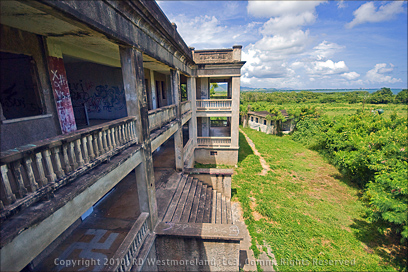 Most of the homes as well as the business structures date from the early 1920’s There was evidence of new homes built of cement so there is some activity going on. There is a golf course there, but I did not check it out. While driving around, I found an old abandoned 2 story cement hotel and the tiny railroad depot of Aguirre. Both were dated 1926.
Most of the homes as well as the business structures date from the early 1920’s There was evidence of new homes built of cement so there is some activity going on. There is a golf course there, but I did not check it out. While driving around, I found an old abandoned 2 story cement hotel and the tiny railroad depot of Aguirre. Both were dated 1926.
The little RR freight office was overgrown with grass well over my head, but that did not stop me from checking it out. The only posted warning signs were about trashing it or shooting off guns. Someone had gone to a lot of trouble to plant dozens and dozens of small trees out in front of the place. 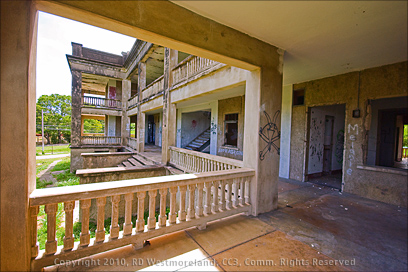 I worked my way through the grass to get inside for a shot. The stairs to the 2nd floor were rotted out so I passed on that. Maybe next time. It was easy to see where the loading dock sat in reference to the freight doors. It must have been a busy little place in the ’30’s and ’40’s.
I worked my way through the grass to get inside for a shot. The stairs to the 2nd floor were rotted out so I passed on that. Maybe next time. It was easy to see where the loading dock sat in reference to the freight doors. It must have been a busy little place in the ’30’s and ’40’s.
Back tracking to the abandoned hotel, I was able to walk and shoot the entire structure. It must have been quite a grand place as well. The 2nd floor had a commanding view of the old mill and the Caribbean Sea beyond. The structure sat on a slight rise giving it a major sense of presence. Employee’s quarters could be seen off the back along with a giant well. Just off the hotel was what appeared to be a restaurant or club connected via a cement walkway. Also in a major state of decay.
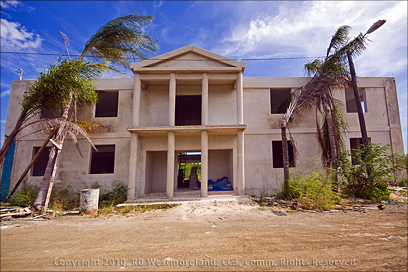 I will come back to Aguirre with ‘other’ gear another time. The photo possibilities are fantastic.
I will come back to Aguirre with ‘other’ gear another time. The photo possibilities are fantastic.
Bahia Jobos
There is a nature preserve off the coast, near Aguirre so we proceeded to check it out. The road quickly turned into a rutted mess with the locals packed around several seafood shacks and restaurants. I wanted to check one out, but it was just too crowded for me. Parking would have been a pain. The end of the road came sooner than I was expecting with a chain strung across it. All of this is right at the water’s edge. Many homes, some quite expensive, lined the high side of the road. We made our way back to Salinas and on home to Coamo from there.
Arroyo is next on the list to check out.
I also located the Speedway in Salinas where they run stock car drag races and oval track competition. It is open on Sundays, Mondays and Wednesdays. I look forward to checking it out as well.



Sherri Hodies says
Martha Andrus, on your 11/2013 post: Did you ever find out info on your sugar sack? I have the same exact one. We use to use it to put grain in for my Godparents calves in the early 1970’s. Just trying to find out more info on it also.
Scurvy Dog: I wondered if when you were in Mayaguez if you found out anything. There has to be info or the grounds the remains or something that we could look at. Were you able to take a picture of any ruins from Mayaguez: Western Sugar Refining Co. Mayaguez, P.R. Bemisno? S.Dog- I’m still woring on that. Some of the ruins are on private property so access can be restricted.
john velazquez says
My Mom tells me of her grandfather being a plantation owner in Humacao. I have tried to find info on that ,maybe some one might recognize the name of Perfecto Rodriguez. He was born in spain. He had one daughter who died from tuberculosis around 1936. Her name mercedes.
Claudio Burgos says
Aguirre is were in was born and lived for some beautiful years, especially when Safra came that was when sugar production would start.. beautiful time to be alive. S.Dog- Thank you. Puerto Rico is a marvelous place… Magical.
Lisa Andujar says
I’m looking for info on a sugar cane planation owned by Family Name Velasquez Nunez in Maricoa, Puerto Rico. His sibling were raised on this farm. He visited as a boy, his siblings are: Salvador Nunez, Anna Nunez, Emilio Nunez, Gloria Nunez and Carmen Nunez.
Thankyou
Lisa Andujar
Edwin Rosado says
Nice site scurvy dog. Was in Aguirre last week. Visited the old hospital ruins adjacent to the second hole of the golf course. Walked the course a little since I like to golf. Clubhouse was closed at about 3 pm on a weekday. I am a model railroad hobbyist. Currently building old San Juan from 1898-1928, then el yunque, luquillo beach and fajardo area, then moving to cane operations before moving south to Ponce port operations. Want to model the company town of Aguirre. Beginning research on the town. Have taken many pictures and studying town history. I am from Cayey, PR but now reside in Maryland. You can view very raw YouTube footage at https://www.youtube.com/watch?v=1Py8LjLd2i8 – Thanks for sharing. (S.Dog- Thanks for the comments and please share the details of your effort. I know there are others who like the old PR railroad images and history, I do! Arrg!)
Nancy says
Please give me an answer, why didn’t Puerto Rico continue maintaining the rail way service, that circled the island after the sugar mills closed down? I am staying in Ensenada, where the chimneys stand tall over the remains of the sugar mill. (S.Dog- There were several reasons that contributed to their demise. Except in San Juan, all of these small trains were privately owned by various sugar cartels. As such, they were not directly compatible with each other like the old railroads of the southern United States (before the civil war). So you would have to get off and on a series of trains to get anywhere. The primary use was for transporting cane before the development of ‘passable roads’ for automobiles, well before the 1950’s. Steam engines were very temperamental requiring constant maintenance to keep running. There were a few passenger cars, but schedules worked around the sugar cane season so it was not particularly dependable even when it did work. Near the end, the PR Government stepped in to try and save the sugar cane industry, but the high cost of labor was unavoidable (US minimum wage issues). Basically, cars and trucks became the favorite means of transportation because of how undependable the railroad(s) were. That said, I think there is a missed tourism opportunity with not having a small live steam run here, especially on the south side of the island. I think it would be a huge attraction.)
Martha Andrus says
I have an old sugar sack sheet. The label is Western Sugar Refining CO. Mayaguez P.R. Bemisno. It has 3 crowns above the label. The other writing says made in America 100 lbs net. Can anyone tell me about this company? (S.Dog- Not sure myself, but maybe someone reading this can comment. Thanks!)
Ivellise Vazquez says
Hello! I am looking for resources about the history of the sugar plantations in Puerto Rico, and the slaves who worked the plantations. Any resources you can refer me to, would be greatly appreciated. I am doing a research paper about the haciendas azuceras for my final Masters project. Thank you! (S.Dog- Sorry for the delay, but I get all my info from Wikipedia, the US Library of Congress and the Encyclopedia of Puerto Rico website which is available in both English and Spanish. Hope that helps, Arrg!)
Virgil rios says
I Found this to be a very interesting site. I’m hoping someone out there can help me find some information about a plantation in P R . I believe It was owned by the Vasquez family don Leon Vazquez his wife and children,Lydia Mario and Dolores .Dolores married Jose Cheo Rodriguez Sierra and moved to New York in the early 1920s. Dlores died a few years after they arrived there two daughters went to a boarding school in Tarry Town .Joe owned and operated one of the many cigar stores in NY. His was located on 37th street ,between Broadway and 7th Ave. Cheo was an integral part of a league of Spanish New York baseball teams.His team was called Vino Negro. I believe it was in part sponsored by Goya. Looking to full in the gaps and find the plantation. Virgil (S.Dog- If you have info on this, I’ll pass it on, but please “quote” this comment for reference. It’s hard to keep up with these requests. ARRG!)
Betsy Irene Arcay says
I enjoyed reading this article. Would like to have information about Mercedita, the biggest Plantation in Borinquen. That is how Isabel Albizu addressed it in her Bomba song, Mercedita. (S.Dog- We are working on that one. Arrg!)
Jamie Marcial Connell says
I am looking for any information regarding sugar cane plantations in or around Aguadilla with owners by the name of Munoz or Muniz. My great grandmother, Teresa Garcia de Marcial worked on this plantation and my grandmother was the child of Teresa and the plantation owner Antonio Munoz or Muniz. I am having a lot of difficulty locating anything about him. Would you happen to know anything about him or a list of plantation owners from the early 1900s? (S.Dog- Maybe some of our readers will be able to help by leaving a comment or contacting me directly and I’ll pass it along. Good Luck!)
Roberto says
Hi Christina-
I have had a person contact me with info I think you might find interesting. This is provided without any restrictions so proceed at your own risk. I think it’s safe, but I cannot promise it is. Roberto in Coamo
——————————————————-
No problem Susie , I’ll see what I can do. Bob
—
From: Susie Rudgley
To: Robert Westmoreland
Sent: Tuesday, January 22, 2013 5:54 AM
Subject: Re: I have a Question: The African Blondin
Hi Robert,
Yes it is legit! I did go back and re read her post, and she was actually asking for info about plantation owners. However, I do have the family tree forward of Carlos Trower, but we have never been able to figure out where he was born, or an actual date.. On his marriage certificate it says he was born in New York. He performed his tightrope act all over the world, but mostly he was in England. His daughter became a trapeze artist. He was known as ‘The African Blondin’. He took the name from the original Blondin who walked across Niagara Falls on a tightrope
Christina’s post was March 2011 on a piece about plantations.
Thank you for replying :-)
Susie
On 22 Jan 2013, at 02:37, Robert Westmoreland wrote:
Hi, Susie-
Please reply to this email so I can confirm this is legit and I’ll gladly pass it on. Cannot be too careful these days.
Sincerely, Roberto in Coamo
—
From: susie rudgley
To: robertospuertorico.com
Sent: Monday, January 21, 2013 9:19 PM
Subject: I have a Question: The African Blondin
To: Webmaster
From:
susie rudgley
Message:
Hi, there was a post by Christina in 2011 who was researching her
family tree. Carlos Trower (aka the African Blondin) is my great great
great Grandfather and I know a little of the family history. If you
can pass on my email I would be happy to share my information.
Thanks,
Susie
—————————————————————————————-
Lucy C. says
Great fotos – I grew up in Aguirre. Hotel housed largely company employees – Small houses at side opened on pool.
Restaurant on other side was residents’ dining facility! Would love to see fotos of your next visit, since Salinas mayor taking an interest in possible restoration.
kredyty says
I think other site proprietors should take this site as an model, very clean and great user friendly style and design, let alone the content. You’re an expert in this topic!
Flory says
I did a Google search on Guayama and came accross your blog. Great find! I was born in Guayama – grew up in Mosquito in the early 70s. I’m writing a memoir about my childhood there, and the men on the train tossing sugarcane to us are some of my favorite memories. My grandfather was known as Moga. This could be a surname, but now we are all known as Moga. Doing research on where the name came from.. Great pictures! Flory
Christina says
What a wonderful site. I am researching my family tree and have found out that my great, great grandfather was probably the product of a slave and an owner on Puerto Rico. His name was Carlos Lamontine Trower and he ended up in England as a ‘high wire walker’ and became very famous, called ‘The African Blondin’. He was trained by Blondin and also walked across Niagra Falls on a tightrope. He died in 1889 of syphilis and is buried in London. If anyone has information of plantation owners names from 1800 I would appreciate some info. Thanx. (Admin Note- If you can help, send it to me and I’ll pass it on. So Sez the Dog, Arrg!)
Norma I. Vilaro says
I enjoyed your site, for I myself have spend four years visiting old haciendas and when Im done I will post pictures. The reader Ceci mentioned a plantation home in Aguadilla, I’m not sure if the Godreau family had more than one hacienda but I know Elias Godreau Lanausse was the owner of Hacienda Magdalena in Aguirre. (Big Thanx- I look forward to seeing the photos, the Dog)
Ceci says
Just posted remark on FB about sugar mills and plantations. My mother worked as a servant and nanny on a plantation owned by the Gudreau or Gudreaux family. I’m trying to gather as much info on this particular plantation as possible. Your pictures and info bring back alot of memories. I visited the Gudreau plantation in the 1950’s with my mother. The house was spacious, marble everywhere, floors, baths. The ceilings were very high. I can’t remember where the plantation, but I want to say Aguadilla? Today marks the 7th anniversary of my mother’s death (she lived to be 92). So coming across your website today is very special. (Gracias- Roberto)
Dwain loos says
Thanks for the awesome post, keep write in your blog.
Bookmarked (:
Brigitte Orduna says
Wow! I like the post.
Madelaine Fuselier says
This website is just great. I like sites like this with good material. I have bookmarked this site and will come back. Thanks
Peter Quinones says
Hi! Nice touching story, I’m all interested and can’t wait for your next feature. I go to Puerto Rico a lot and stay at our condo in Yauco. Every chance I get I like to explore. I shot a rare photo of the train station at Guanica with its sign saying Santa Rita. The sign said made in England. They destroyed it and who knows where it is. Not to far is the sugar mill of Guanica. Please keep me informed. Peter Quinones, City Island, Bronx